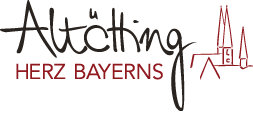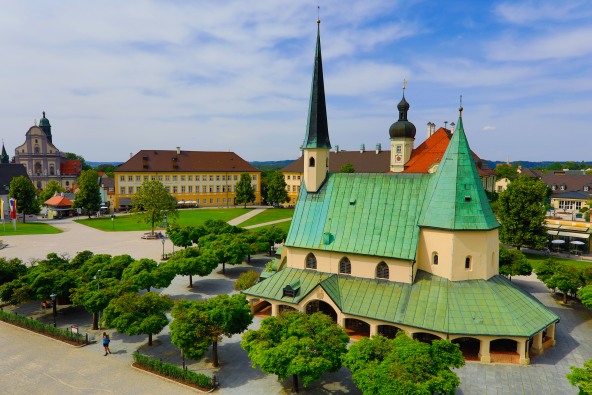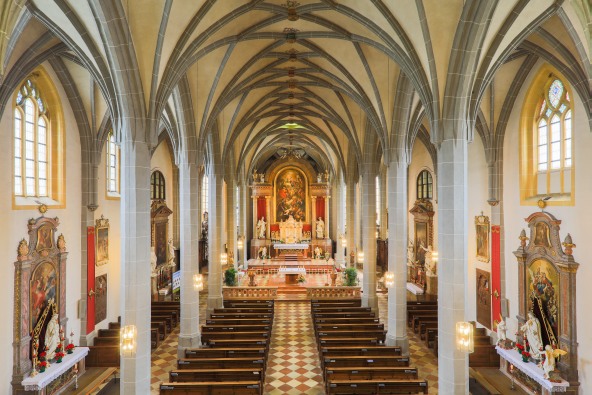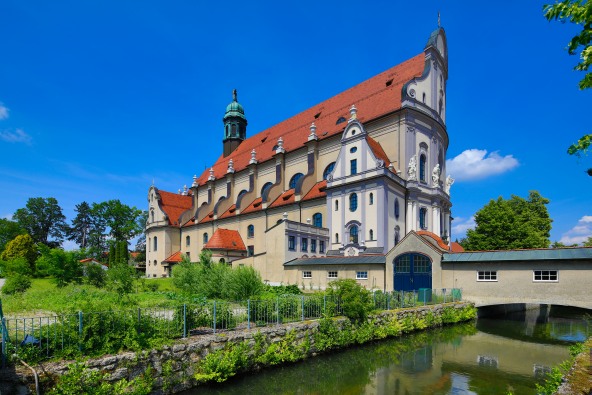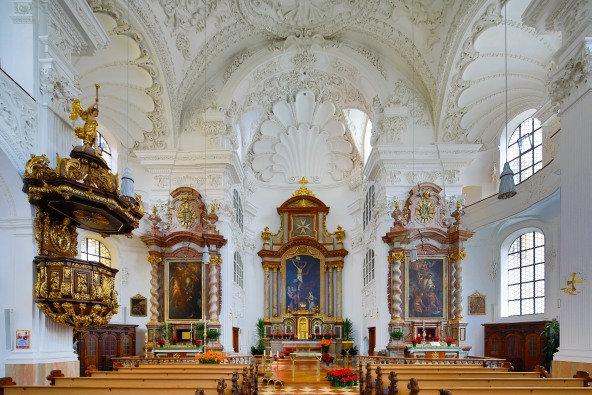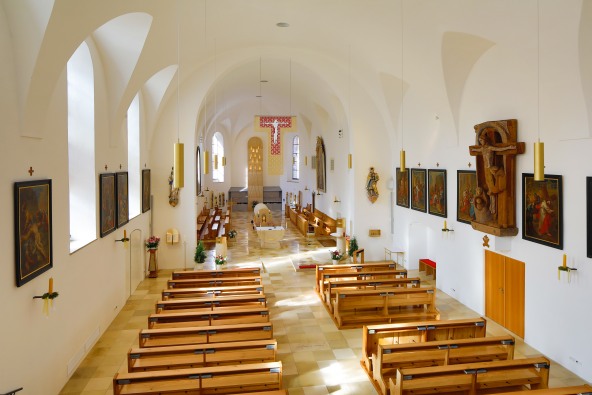Small in form, but large in history and significance, the Miraculous Image chapel rules the spacious Kapellplatz (Chapel Square). Its Octagon (octagonal tower), the core construction of this church, presumably from the 700’s, may be the oldest central construction in Germany. The approx. 70 cm-high, early Gothic scene of a standing Mother of God with the Child, which stems from Burgundy or along the Upper Rhine and is carved out of lime-wood, arrived here around 1330. About 150 years later, after the reports of two healing miracles. Silver urns containing the hearts of important personalities from the Wittelsbach family, among them all prince electors. The chapel walkway is adorned with about 2,000 votive tablets from several centuries.
